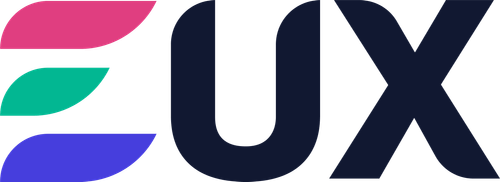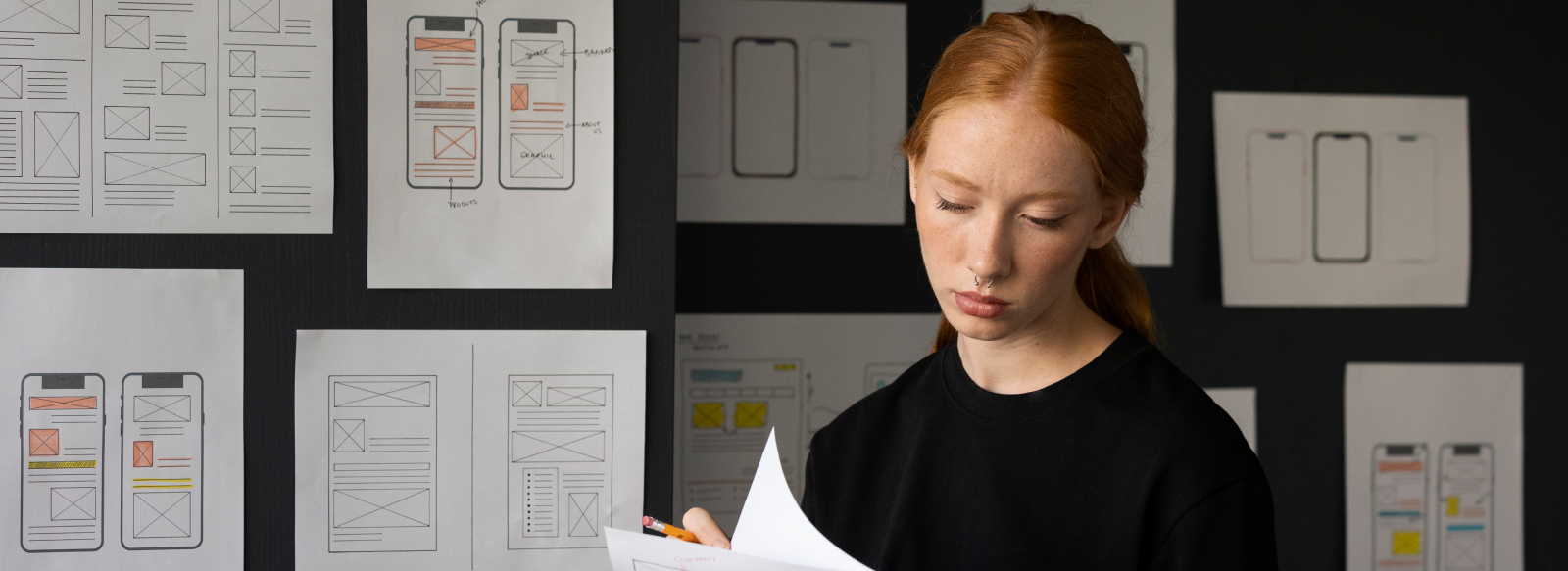Have you ever experienced disorientation in a winding maze, desperately desiring a chart to direct your progress? That’s how navigating complex ux framework for enterprise applications can feel without the right knowledge. It’s like being an explorer discovering uncharted territories. But what if there was someone who could help chart this territory?
I’ve spent years exploring these landscapes and I’m here to share that adventure with you.
You’ll discover the role of user experience in enterprise apps, understand why good design matters, learn about effective UX frameworks’ key elements, tackle challenges head-on while designing enterprise UX, harness big data’s power in your apps and stay updated on future trends. You’ll also uncover proven strategies that promise success in crafting powerful user experiences.
So, gear up for a thrilling adventure! We’re not just taking another stroll down familiar paths. Instead, we’ll delve into often overlooked areas and uncover fascinating insights together.
Understanding UX Frameworks for Enterprise Applications
In the corporate world, enterprise applications have become a critical tool to streamline business processes and save precious time, money, and effort. The secret sauce that makes these apps effective lies in their user experience (UX) design.
The role of UX in enterprise applications is not merely about aesthetics or interface. It’s an intricate web where each thread has its own significance – from understanding the complex enterprise needs to crafting solutions that fit like a glove on every user’s hand.
Enterprise UX differs substantially from consumer UX. While consumer-focused designs primarily aim at delighting users with captivating visuals and seamless navigation, enterprise application designs are more utilitarian – focusing on efficiency, productivity and alignment with existing workflows.
User Experience: A Catalyst for Success
A well-crafted UX can act as a spark for success, providing cost-effective methods to drive up employee gratification and boost profits.
A robust UX framework for enterprise applications, therefore, is not just desirable but necessary. But what does it entail? What are the building blocks?
Navigating through Complexity: Building Blocks of Enterprise Application Design
An effective framework begins by comprehending hundreds of separate requirements — all needed to deliver an effortless interaction between real users and digital interfaces.
From minimizing cognitive load while dealing with data-heavy tasks to ensuring security requirements don’t compromise usability; everything counts when designing an optimal UI-UX combo for large organizations or large companies.
Moreover, managing such complexity isn’t a simple task. However, once done right, it boosts productivity, helps employees perform better, thus leading towards organization growth.
And this isn’t even the end game yet.
Big Data: A Game Changer in Enterprise Applications
The role of big data can’t be overlooked when discussing UX frameworks for enterprise applications. The capability to analyze large volumes of information and extract meaningful insights is what makes these apps truly powerful.
To wrap it up, creating an engaging user experience in enterprise software is all about knowing the specific needs and limits of a company’s environment. It’s also crucial to give users what they need.
Key Takeaway:
Enterprise applications need more than just captivating visuals and seamless navigation. A robust UX framework, which understands complex needs and crafts fitting solutions, is key to boosting productivity and growth. The power of big data analysis can’t be ignored either; it provides the insights that make these apps truly powerful.
Importance of Good Design in Enterprise Applications

The design realm is vast, but when it comes to enterprise apps, good design holds a unique and significant place. Let’s examine why this is important.
A well-designed app can turn complex tasks into simple ones. This helps employees perform their duties more efficiently. Whitney Quesenbery’s 5Es, an influential framework for understanding users, emphasizes the role of effective UX in reducing the learning curve associated with new software tools.
In fact, good enterprise UX has direct implications on business outcomes and productivity levels. It’s not just about making an application look pretty; it involves creating intuitive interfaces that make sure users find what they need quickly.
Allow me to illustrate with a practical instance. think about how many times you’ve been frustrated by badly designed ERP software or management systems at work? You know – those moments where you spend ages trying to figure out which button creates a new project or closes an existing task?
Beyond Aesthetics: The True Value of Good Design
This goes beyond aesthetics; we’re talking functionality and usability as key drivers for employee satisfaction within large enterprises. Employees appreciate when applications are straightforward to use and allow them to save time while completing specific tasks effectively.
Data visualization is another critical component here — presenting data clearly can aid informed decisions and increase overall efficiency in large organizations like yours.
Read: Software Usability: The Key to Enterprise Success
Making Business Sense
You see, investing in superior product design isn’t just for show – it makes sound business sense too. According to recent studies (yes actual numbers.), well-executed designs lead directly towards cost-effective solutions along with greater employee satisfaction.
And guess what? Greater employee satisfaction can boost productivity and result in increased business revenues. So, if you’re looking to make a positive impact on your bottom line (who isn’t?), then investing in good design for your enterprise apps should be high on the agenda.
In Conclusion
All this highlights that, for enterprise software, we need more than just functionality. User experience is key too.
Key Takeaway:
beauty and brains. A slick, visually appealing interface is crucial, but so is a smart, user-friendly design that makes tasks easier to tackle. This blend of form and function not only helps workers save time and lowers their stress levels, it also creates cost-effective solutions that can boost productivity across the board. And when your employees are happier with their tools, they’re likely to be more satisfied in their jobs overall — leading to improved business performance as a bonus.
Key Elements of an Effective UX Framework for Enterprise Applications
Creating a top-notch enterprise app isn’t just about code and features. It’s also about integrating hundreds of requirements to deliver a flawless user experience (UX). Let’s unpack the essential building blocks that make up a robust UX framework tailored for large-scale corporate environments.
The Building Blocks
The first key element in designing effective enterprise applications is understanding the cognitive load. Simply put, this means making sure your application doesn’t overwhelm users with too much information or complex tasks. This requires strategic use of data visualization techniques to present critical business insights in easy-to-understand formats.
Next, we need strong alignment between the UX strategy and business goals. Remember, your design solutions should serve not only end-users but also support organizational objectives like productivity improvement or cost reduction.
User-Centric Design
A well-designed enterprise app focuses on real users’ needs while balancing security requirements inherent to most large organizations. So think less “cool animations,” more streamlined workflows that let employees perform their specific tasks efficiently.
We’re talking practicality here: quick access to frequently used functions, intuitive navigation menus – all aimed at reducing learning curves associated with new software deployments within enterprises.
Bridging The Gap Between Consumer And Enterprise User Experiences

Familiarity can be comforting; hence many successful apps draw inspiration from consumer mobile apps’ simplicity and ease-of-use while maintaining focus on complex enterprise-specific needs like interoperability with existing management systems or scalability concerns related to supporting thousands of concurrent users across different geographical locations.
In conclusion, crafting an effective UX framework for enterprise applications is a careful balancing act – one that requires blending usability with functionality while maintaining a clear focus on business objectives. Remember, the best UX design isn’t always about flashiness or cutting-edge tech – sometimes, it’s just about making life easier for your users.
Key Takeaway:
Creating a successful UX framework for enterprise apps is all about balancing user needs with business goals. Make sure your design doesn’t overload users and aligns with organizational objectives. Keep it practical, intuitive, and familiar, drawing inspiration from consumer apps while addressing enterprise-specific requirements like interoperability or scalability.
Overcoming Challenges in Designing Enterprise UX
Designing a UX for enterprise applications can be complex. You might face numerous challenges, from difficulty in conducting research to dealing with conflicts of opinion.
Read : Enterprise UX Design Challenges and Best Practices Explored
Roadblocks while designing an Enterprise application
The first major roadblock is the difficulty in conducting research. Getting real users’ feedback on your design can be like finding a needle in a haystack due to stringent security requirements and complex corporate hierarchies.
A shift in user context presents another hurdle. Unlike consumer apps, enterprise software serves multiple stakeholders who have varying roles and needs. Therefore, crafting an interface that meets everyone’s expectations becomes more challenging than cooking up grandma’s secret recipe.
Finding the right information density is yet another obstacle. Too much data could overwhelm users; too little may leave them feeling under-informed or unsatisfied—like eating at an all-you-can-eat buffet but leaving hungry. Balancing this delicate aspect requires both artistry and science.
Tough testing conditions add to these issues because they make usability evaluations tricky to conduct efficiently. It’s akin to trying out new dance moves during live performances instead of practice sessions—not ideal.
Conflicts of opinions often arise between different parties involved – such as business leaders wanting maximum features versus designers advocating for simplicity – which leads us into what feels like Game of Thrones style battles over decision-making authority.
Last but not least, consolidating legacy systems adds layers of complexity—it’s like trying to solve a Rubik’s cube blindfolded. As large organizations usually rely heavily on these systems, UX designers must ensure seamless integration with the new design to avoid disrupting workflows.
Navigating this complex labyrinth takes patience, perseverance and a creative spark. But when you successfully navigate this labyrinth, the result is an enterprise application that enhances productivity and improves employee satisfaction—a win-win for everyone.
Key Takeaway:
Designing UX for enterprise applications is no walk in the park – it’s like solving a Rubik’s cube blindfolded. From conducting user research to balancing information density and managing conflicting opinions, challenges abound. But with patience, perseverance, and creativity, you can craft an application that boosts productivity and delights users.
Role of Big Data in Enterprise Applications
Big data plays a hidden role in enterprise applications, providing essential insight to help companies gain an edge over the competition. It’s the unsung hero that works behind the scenes, transforming raw information into actionable business insights.
Gaining a comprehensive understanding of the market can be essential to success in today’s competitive landscape. By harnessing big data capabilities, businesses get to unlock hidden opportunities and boost their decision-making process.
Tapping into Business Insights with Big Data
To appreciate the role of big data in enterprise apps, imagine sifting through an ocean for pearls—those precious bits are your key business insights amidst a sea of unstructured data. With robust big data capabilities embedded within your application architecture, this otherwise daunting task becomes feasible and effective.
The sheer volume and complexity associated with processing such vast amounts of data have made traditional methods almost obsolete. But as enterprises increasingly rely on app-driven solutions to streamline operations and foster growth, leveraging big data has become more crucial than ever before.
Achieving Actionable Opportunities
Did you know? A well-optimized enterprise app backed by efficient use of big data can lead companies straight to untapped goldmines – or rather actionable opportunities. This ability not only offers organizations competitive advantages but also helps them stay ahead in their respective markets.
For instance, think about how online retailers utilize user behavior analytics from large datasets to personalize customer experiences—an example illustrating why understanding users’ needs at scale requires tapping into extensive pools of aggregated information (aka ‘Big Data’).
The practicality that underpins these scenarios emphasizes why having an efficient strategy around integrating big data analytics into your enterprise applications can prove to be a game-changer.
So, while big data may seem like an intimidating concept, its role in shaping successful enterprise applications is undeniably vital.
Key Takeaway:
Big data is the secret weapon in enterprise applications, transforming raw info into valuable business insights. By harnessing its power, businesses unlock hidden opportunities and enhance decision-making. Integrating big data analytics effectively within your apps can lead to actionable opportunities, providing a competitive edge and helping stay ahead in the market.
Best Practices for Designing Enterprise UX

Designing a successful user experience (UX) for enterprise applications isn’t just about aesthetics. Constructing an interface that is both user-friendly and capable of facilitating their objectives is essential to creating a successful enterprise UX.
In the world of enterprise software design, creating extensive documentation is crucial. Documentation allows you to keep track of all aspects of your design process and gives everyone on your team a clear understanding of what’s been done so far and what steps are needed next.
Maintaining consistency across different parts of the application ensures that once users learn how one section works, they can apply this knowledge elsewhere in the app too. This makes sure learning curves stay manageable and doesn’t cause frustration among users.
Adhering to Enterprise Processes
GoodWorkLabs highlights, “In enterprise environments, processes matter more than creativity.” It means you need to respect established workflows instead of trying to reinvent everything from scratch. While it may be tempting to use flashy UI elements or innovative navigation structures, remember – ease-of-use trumps novelty when it comes down to productivity tools like these ones used by large companies.
To improve end-user visibility into business operations using data visualization techniques effectively is also key; as Whitney Quesenbery suggests, create designs which allow real users make informed decisions quickly based upon presented information at hand without getting overwhelmed by complexity.
Limited Use Of Creativity And Increased End-User Visibility
Designing enterprise UX is about finding the balance between creativity and functionality. You don’t want to limit your team’s creative spirit, but you also need to make sure that your designs are easy for users to understand.
Increasing end-user visibility into processes can help employees perform tasks more efficiently, boosting productivity in large organizations. A well-designed interface gives clear feedback on task status and progress, which helps reduce user frustration.
Ultimately, good enterprise UX design means putting yourself in the shoes of your users – understanding their needs and designing solutions built around them.
Key Takeaway:
Designing a stellar UX for enterprise apps goes beyond aesthetics – it’s about understanding user needs and crafting an intuitive, efficient interface. Keep documentation extensive to track progress and maintain consistency across the app to ease learning curves. Balance creativity with functionality, always prioritizing easy-to-understand designs that enhance end-user visibility into processes.
Future Trends in Enterprise UX Design
The landscape of enterprise UX design is ever-evolving. As businesses adapt to new technologies and market dynamics, the need for more user-centric, efficient, and productive designs is becoming increasingly crucial.
A major trend shaping the future of enterprise UX design involves implementing an enterprise design system. This helps achieve faster results, consistent design across different applications within the organization, smoother handoff between teams, easier iteration on designs, and quicker updates. An effective enterprise design system essentially reduces the learning curve for designers while ensuring consistency in product aesthetics and functionalities.
Another significant shift we’re seeing is towards personalization. Companies are recognizing that their staff can operate more efficiently when they have the ability to customize their workspace based on individual requirements. By incorporating adaptive UI elements like a ‘create button’ or customizable dashboards into web app interfaces, large organizations not only save time but also boost productivity by reducing cognitive load on users.
Data visualization has been a hot topic lately because it allows real users to make informed decisions quickly based on complex data sets provided through cloud services or ERP software management systems. It’s expected this trend will continue its momentum in the coming years as it facilitates a clearer understanding of business metrics, which further enhances employee efficiency.
Taking User Experience Beyond Screens
In addition to these trends, however, there’s another dimension gaining traction – designing experiences beyond screens. Yes, you heard it right. More enterprises are investing in voice interface technology such as Amazon’s Alexa for Business, providing a completely new way for interacting with enterprise software solutions built specifically for large companies.
Security Centric Designs
Another key aspect of enterprise UX that’s coming into the spotlight is security. As cyber threats grow more sophisticated, so must our designs to protect sensitive data and uphold user trust. This means designing process flows that ensure secure interactions while maintaining a seamless experience for users.
In conclusion, these future trends are just a glimpse into what’s in store for Enterprise UX Design. By embracing these changes and continually adapting to new challenges, we can design better products – ultimately leading to improved employee satisfaction and business success.
Key Takeaway:
As the landscape of enterprise UX design continually evolves, several trends are driving change. The implementation of an enterprise design system leads to faster outcomes and more consistent designs. Personalizing interfaces to meet individual needs not only saves time but also enhances productivity. Moreover, data visualization is gaining traction as it supports informed decision-making processes. We’re also witnessing a shift towards designing experiences beyond screens with the help of voice interface technology. Lastly, there’s a growing emphasis on prioritizing security in our designs to safeguard sensitive information.
FAQs in Relation to UX Framework for Enterprise Applications
What are the 4 major applications for enterprise applications?
Enterprise Resource Planning, Customer Relationship Management, Supply Chain Management, and Business Intelligence make up the big four of enterprise apps.
What is an enterprise application framework?
An Enterprise Application Framework provides a structure to build and manage large software projects. It simplifies development by providing reusable components.
What are the key frameworks in UX design?
The main frameworks include Human-Centered Design, Design Thinking, Agile UX, Lean UX, and Goal-Directed Design among others.
What is a UX framework?
A User Experience (UX) Framework guides designers through the process of creating meaningful user experiences that solve real problems effectively.
Conclusion
Embarking on the journey of understanding a ux framework for enterprise applications isn’t simple. But, you’ve navigated through this labyrinth with me and discovered some powerful insights.
We’ve explored why good design is crucial in these apps, leading to cost-effective solutions and greater employee satisfaction. We’ve uncovered how big data capabilities can enhance their functionality and effectiveness.
You now know about common challenges faced while designing enterprise UX and strategies to overcome them. You’re aware of best practices that promise success in crafting user experiences.
In the coming years, keep an eye out for emerging trends shaping the future of user experience design for enterprises. With the expertise you’ve acquired, you’re in a prime position to make your mark!




